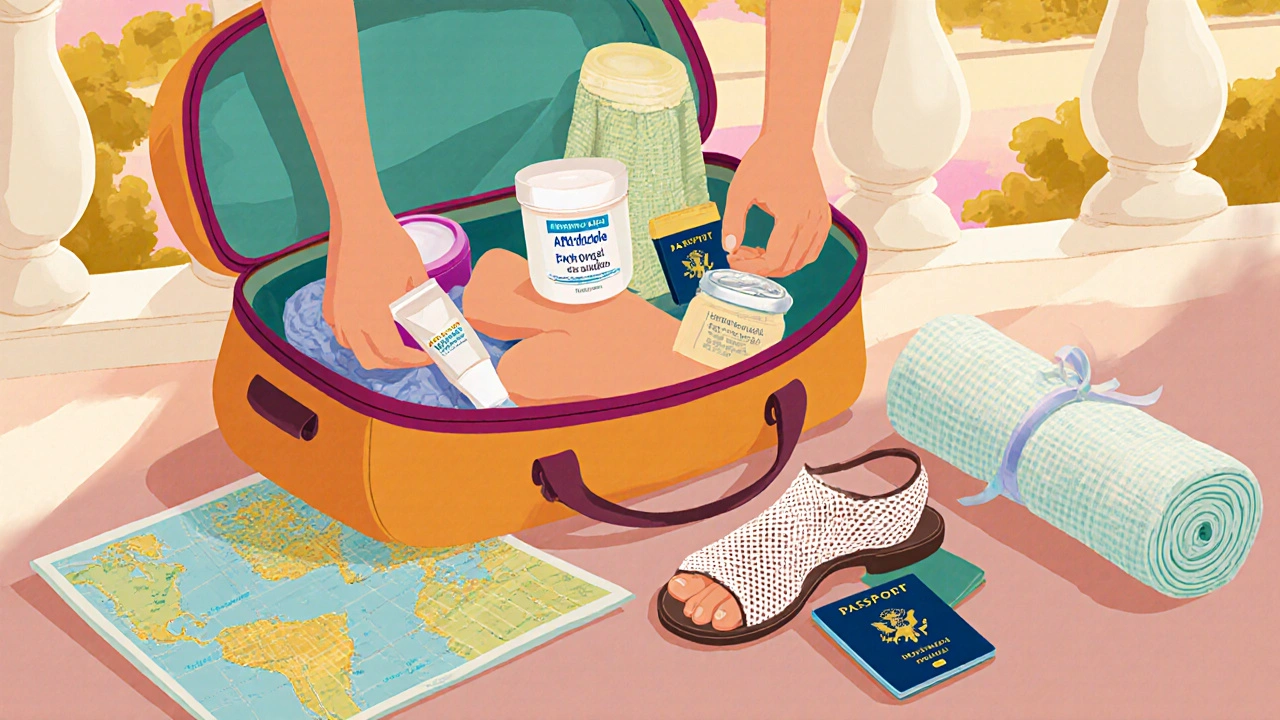Antifungal Travel Tips: Stay Fresh on the Road
When planning a trip, staying healthy means more than packing a passport. Antifungal Travel Tips, practical advice for preventing and managing fungal infections while traveling. Also known as travel antifungal guidance, it helps travelers stay comfortable and avoid skin or nail problems.
One of the first steps is understanding the tools you’ll use. Antifungal medication, drugs that treat or prevent fungal growth on skin, nails, and mucous membranes comes in creams, sprays, and oral pills. Choosing the right format depends on the destination’s climate, your skin type, and how long you’ll be away. Fungal infection, an overgrowth of yeast or mold that can cause itching, redness, and odor thrives in warm, humid places—think tropical beaches or high‑altitude cabins where sweat can linger. Pairing good hygiene with the proper antifungal medication reduces the chance of an outbreak before it starts. Travel health, the broader set of precautions users take to stay well while abroad includes vaccination, diet, and staying hydrated, and it directly influences your susceptibility to fungal issues.
Why preparation matters on the move
In short, antifungal travel tips can save you from uncomfortable outbreaks that ruin a vacation. The logic is simple: prevent‑then‑treat beats scrambling for over‑the‑counter creams in a foreign pharmacy. Before you board, check the shelf life of any prescription cream and pack a small, travel‑size tube in your carry‑on. If you’re heading to a region known for athlete's foot or ringworm, bring a broad‑spectrum antifungal spray for shoes and socks. Remember that resistance is on the rise—using the same generic product repeatedly can make stubborn strains harder to kill. Rotate between different classes of medication when you have a prescription plan, and always follow the dosing schedule even if symptoms improve.
Beyond medication, lifestyle tweaks make a big difference. Wear breathable fabrics, change damp socks and underwear daily, and keep feet dry with powder or moisture‑wicking liners. When staying in hostels or shared bathrooms, use flip‑flops in communal showers to avoid direct contact with contaminated surfaces. In hot climates, carry a mini fan or cooling towel to reduce sweat buildup, because moisture is the main fuel for fungi. If you notice any itching or redness, treat it immediately—early intervention stops spread and keeps your trip on track. Below, you’ll find a curated list of articles that dive deeper into specific antifungal drugs, resistance trends, and real‑world travel case studies, giving you a toolkit you can rely on wherever you go.

Top Prevention Strategies for Travelers at Risk of Ringworm
Learn proven ringworm prevention tactics for travelers, from packing antifungal gear to daily hygiene habits, early treatment steps, and post‑trip cleaning.
